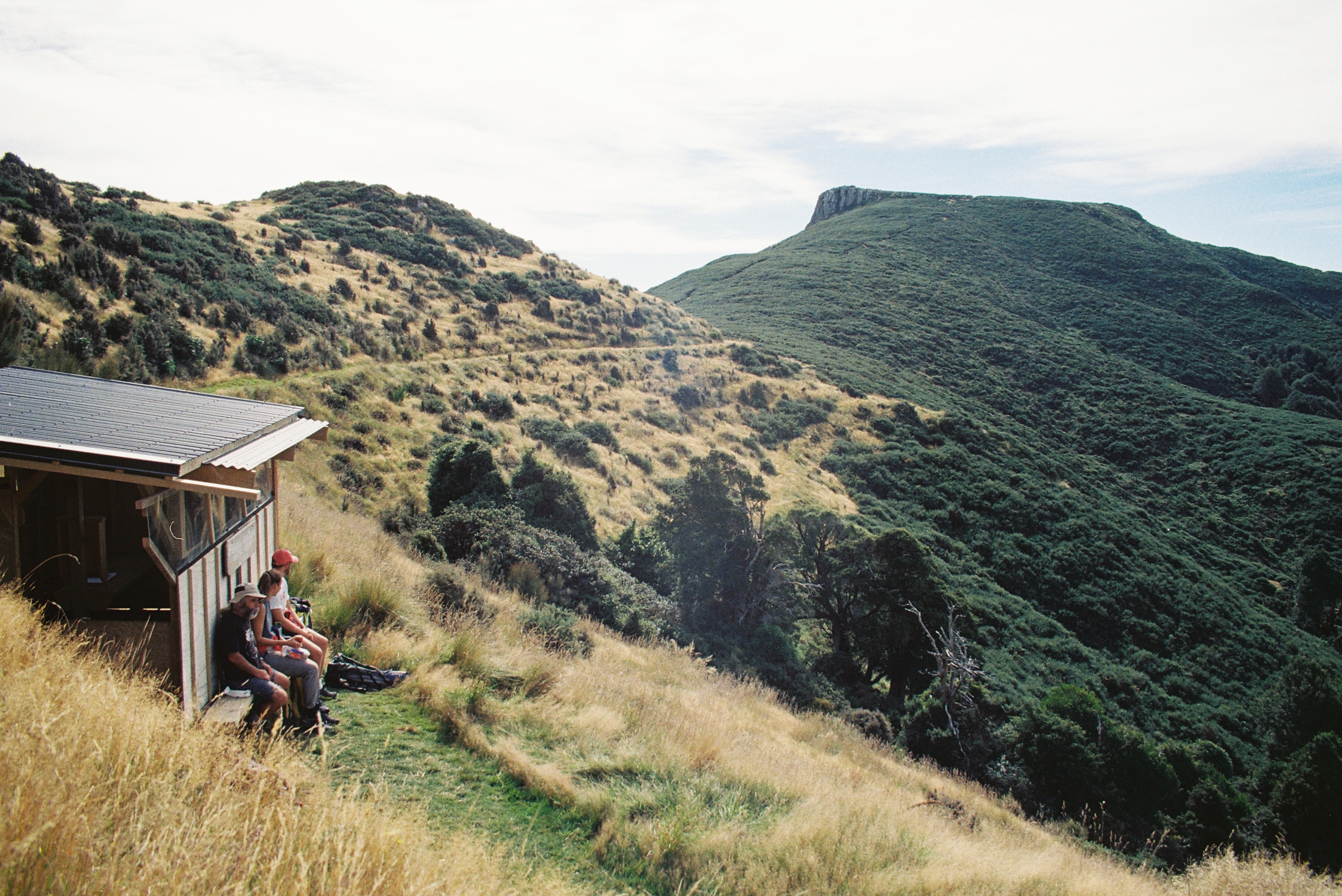|
Places in Human Nature is a sub-series of Human Nature that focuses on places that exemplify how humans and nature can help each other thrive. There are so many examples, big and small, of how humanity can aid and give back to the planet, and this hopes to shine some light on those places. New Zealand is a beautiful place. While we were visiting earlier this year, we traveled to a number of wonderful areas that showcased just how incredible and diverse the landscape on the islands are. Of course, given only a little over a week to explore, we were bound to miss some things. It was only on the flight back home when I was sifting through documentaries that I found one such place I wish we could go back to visit. That place, and the topic here, is Hinewai Reserve. Situated near Akaroa, New Zealand on the Banks Peninsula of the South Island, stands what is now the Hinewai Reserve. Before the original 109 hectares of land was bought (now expanded to 1250 hectares) by the Maurice White Native Forest Trust in 1987, this area was essentially destroyed agricultural crop and grazing land. After generations of human use, the land became dominated by exotic invasive species with the soil tired from repetitive use. Over 30 years later, the area is beginning to look more like the native forest that once dominated the region. Let's take a look into what led to such a successful regeneration project. While the area is managed by a number of volunteers, I would be remiss not to mention Hinewai's land manager, Hugh Wilson, who has been working on this project since its beginnings. Hugh is a botanist local to New Zealand who eagerly accepted the challenge of regenerating this land to native forest. His ideology is one of minimal interference, often opting to let nature take its course while humans only give it little pushes. Hugh is a veritable encyclopedia of New Zealand's local wildlife, native or not, and that knowledge is a key factor in the project's success. Upon surveying the land, considering ways that it could potentially be regenerated, he was able to catalog that there were, indeed, a number of invasive species present preventing the native forest from returning. From these findings, he and volunteers look to remove mostly exotic trees that out-compete the natives as well as a number of pest animals that disrupt the ecosystem. Not in the list, much to everyone's surprise is a weed commonly named gorse (Ulex europaeus). When the neighboring farmers all heard that Hugh was planning on just letting the gorse run its course through the land, they all immediately frowned upon it. Agriculturally, gorse is a monster. It's highly opportunistic, growing very quickly, and is incredibly dense in its early stages. So dense, in fact, that if left unmanaged for long, the primary way to remove it is by bulldozer. Suffice to say, it's a nuisance. This is where Hugh's knowledge comes into play. While, yes, this plant is highly detrimental to agricultural fields, it can actually be helpful to the native trees. New Zealand's natives don't need a ton of sun to thrive, so the denseness of young gorse actually provides a protective nursery canopy to the developing trees and shrubs. When the gorse grows older, it ends up thinning out, which leaves an opportunity for the trees to sprout over the weed. The final kicker is that gorse absolutely needs direct sunlight. Partial shade leads to the plants demise, and sure enough, trees end up providing that kind of shade. After the trees manage to grow over the aged gorse, they shadow the gorse enough to kill it off. What we get is a time-managed nursery that succeeds into native forest, more or less, all on its own. Fascinating stuff! Even having seen the plan, local farmers and residents familiar with gorse expected Hugh's plan to either take 50 years to show signs of success or just outright flop. In reality, within just 10 years, the transformation from gorse-ridden agricultural wasteland had already begun its transformation to native forest in earnest. Everyone was simply astounded! Over 30 years of this minimal interference approach has shown immense progress in the regeneration of the forest. All volunteers bring this mentality to even their travel within the forest, only ever walking (with some exceptions for mountain bikes) to traverse the landscape. In Hugh's mindset, humans are really good at destroying things, so we should try to let nature work itself wherever we can. By minimizing introduction of human technology, resources, and waste to the property, they ensure they leave the forest better than they left it with every visit. That isn't to say humans aren't allowed on the property, though. Hinewai is freely open for humans to visit. The volunteer team behind managing the land have created roughly 20km of tracks for visitors to use to appreciate the forest. No animals, vehicles, or waste are permitted by any means, to minimize any human footprint on the area, but, honestly, all you need to enjoy nature is yourself (and potentially a hiking mate!). Hinewai, under the management of Hugh Wilson, really shows what humans can do to help nature revitalize itself after being used by us for so long. Having the knowledge to understand what's readily available, and choosing your strategy using that knowledge is incredibly important, and this is a wonderful example of how to apply that knowledge to the betterment of the planet. While we certainly don't all have to be expert botanists, learning more about our environment can only help us help it better. Some of the answers could be right under our noses, as with our weedy friend, gorse, in this case. ~ And, as always, don't forget to keep wondering ~ Sources
Fools & Dreamers is available for viewing at: https://www.youtube.com/watch?v=3VZSJKbzyMc * Osmond, Jordan, and Antoinette Wilson. Fools & Dreamers. Happen Films, 2019. * "Hinewai Reserve". Hinewai.Org.Nz, 2020, https://www.hinewai.org.nz/. Accessed 31 May 2020.
0 Comments
Leave a Reply. |
AuthorPrismatic Planet wants to get excited for the planet, raise awareness of its inhabitants, and get smarter about Earth. Archives
July 2024
Categories |



 RSS Feed
RSS Feed